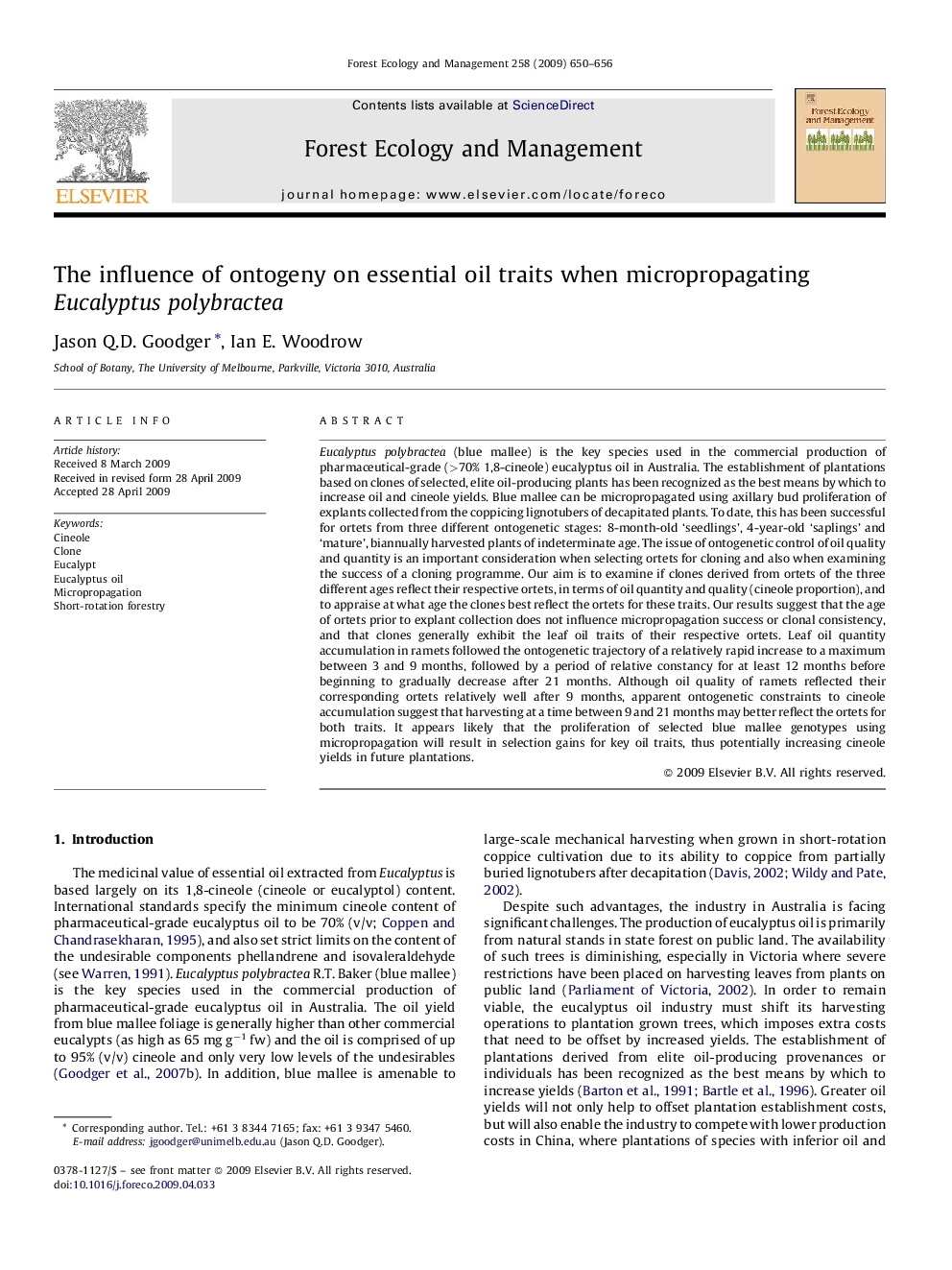| کد مقاله | کد نشریه | سال انتشار | مقاله انگلیسی | نسخه تمام متن |
|---|---|---|---|---|
| 89053 | 159331 | 2009 | 7 صفحه PDF | دانلود رایگان |

Eucalyptus polybractea (blue mallee) is the key species used in the commercial production of pharmaceutical-grade (>70% 1,8-cineole) eucalyptus oil in Australia. The establishment of plantations based on clones of selected, elite oil-producing plants has been recognized as the best means by which to increase oil and cineole yields. Blue mallee can be micropropagated using axillary bud proliferation of explants collected from the coppicing lignotubers of decapitated plants. To date, this has been successful for ortets from three different ontogenetic stages: 8-month-old ‘seedlings’, 4-year-old ‘saplings’ and ‘mature’, biannually harvested plants of indeterminate age. The issue of ontogenetic control of oil quality and quantity is an important consideration when selecting ortets for cloning and also when examining the success of a cloning programme. Our aim is to examine if clones derived from ortets of the three different ages reflect their respective ortets, in terms of oil quantity and quality (cineole proportion), and to appraise at what age the clones best reflect the ortets for these traits. Our results suggest that the age of ortets prior to explant collection does not influence micropropagation success or clonal consistency, and that clones generally exhibit the leaf oil traits of their respective ortets. Leaf oil quantity accumulation in ramets followed the ontogenetic trajectory of a relatively rapid increase to a maximum between 3 and 9 months, followed by a period of relative constancy for at least 12 months before beginning to gradually decrease after 21 months. Although oil quality of ramets reflected their corresponding ortets relatively well after 9 months, apparent ontogenetic constraints to cineole accumulation suggest that harvesting at a time between 9 and 21 months may better reflect the ortets for both traits. It appears likely that the proliferation of selected blue mallee genotypes using micropropagation will result in selection gains for key oil traits, thus potentially increasing cineole yields in future plantations.
Journal: Forest Ecology and Management - Volume 258, Issue 5, 20 August 2009, Pages 650–656